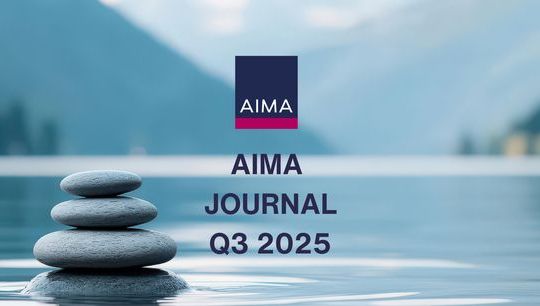UK Qualifying Asset Holding Company tax regime
By Richard Madden; Leo Humphries; Kit Parker, PwC
Published: 20 November 2023
We are now over 18 months on from the introduction of the UK Qualifying Asset Holding Company (QAHC) tax regime in April 2022.
The QAHC legislation was intended to address the tax road blocks which previously prevented the use of a UK company to act as an intermediate holding company within an alternative investment structure and to facilitate the flow of capital, income and gains between investors and underlying investments. The regime seeks to allow investors to be taxed (broadly) as if they had invested in the underlying assets directly and for the intermediate asset holding companies to pay no more tax than is proportionate to the activities they perform.
Whilst there has been increasing engagement from many alternative investment managers and institutional investors, of all sizes and across all of the asset classes, regarding the potential use of UK QAHCs for future investment structures, the focus has definitely centred on the use of the regime by those players within the private credit sector.
Recap of the regime - What are the key benefits of the QAHC for Private credit?
Perhaps the key benefit of the QAHC regime in the private credit space specifically, relates to the amendments that it makes to the UK’s existing interest restriction rules, allowing for interest and other finance costs on debt funding of the QAHC, including profit participating and convertible debt, to be (in principle) deductible on an accruals basis. As a result, the QAHC is effectively only taxed on an arm’s length margin (typically 10 - 25 basis points for a direct lending strategy).
Additionally, we note that the regime introduces two simplicities to the ordinary UK tax rules, which allow for certainty in modelling investments, including:
- The removal of the requirement to deduct UK withholding tax on interest payments made by a QAHC (matched by the fact that the UK already does not impose withholding tax on dividends); and
- An exemption for gains on the disposal of shares or other qualifying equity interests (other than shares which derive 75% of their value from UK land), with no minimum holding period (a common problem when equity kickers are provided in a private credit transaction).
Finally, as a UK resident company fully subject to UK corporation tax at 25%, a QAHC should also be able to benefit from double taxation treaty relief to minimise withholding taxes on underlying investments. Specifically, we would expect that the matching of the location of the asset holding company with the key decision makers for investments where there are UK based investment managers, should further support applications for double tax treaty and certain domestic reliefs against a backdrop of increased scrutiny by tax authorities in this area.
These major changes, linked with the UK’s position surrounding gains on debt instruments qualifying as equivalent to interest, allow the QAHC regime to act as a credible alternative to other European lending platform structures, which to date have primarily been located in Luxembourg and Ireland.
How many QAHCs are there now?
As at the end of October 2023, HMRC confirmed that over 275 QAHCs have elected into the regime. We estimate that c.30 - 50% of these elections were from managers within the private credit sector.
Typically, QAHCs are being used as either a single-investment vehicle or as a GBP denominated investment sleeve as part of a wider fund structure. However, there is a wider movement towards private credit managers exploring a UK QAHC platform under their new fund launches (which echoes the position taken across other asset classes).
What are the key points to consider?
The eligibility criteria
One of the key requirements to elect into the regime is the need to meet various eligibility conditions, focused around UK tax residence, ownership of the QAHC, activity of the QAHC, investment strategy and not being a UK Real Estate Investment Trust, UK securitisation company or a listed company. We note that the key condition to be considered relates to the ownership of a QAHC, which essentially requires that the QAHC must be held by at least 70% Category A (good) investors.
Specifically, the rules aim to limit the application of the regime to certain ‘qualifying funds’ or other institutional investors (i.e. sovereign wealth, pension or insurance funds). Whilst we would expect that the majority of players within the alternative fund industry should be able to meet this condition, the rules, most of which have been repurposed from existing UK tax legislation, are somewhat complex. Realistically, this may be seen as being no different to other countries’ tax regimes and there is simply a learning curve to be tackled.
One concern that was originally raised within the private credit sector related to HMRC’s position regarding the activity condition, which requires the entity to primarily undertake an investment business. We note that there is little statutory guidance as to the meaning of a ‘trade’ and the ‘badges of trade’ are based on a body of case law. However, following discussions with industry stakeholders including the Alternative Credit Council, HMRC have helpfully included some helpful guidance (in the form of examples located within the Investment Funds Manual at IFM 40260) which should help to provide some comfort for those private credit managers seeking to meet the activity condition.
What to consider for a new fund?
Whilst certain managers may not be ready to adopt QAHCs at this moment in time, we have found that many are interested in future-proofing new fund structures to allow themselves the optionality to use a QAHC in the future. Here, the ‘key’ consideration will be ensuring that wording is included within the fund’s marketing documents to investors (specifically its Private Placement Memorandum (PPM) or other offering document) which (i) makes reference to the various entities within the fund; and (ii) satisfies the genuine diversity of ownership (GDO) requirements (one of HMRC’s tests to satisfy as a Qualifying Fund - a Category A investor).
Specifically, Condition A of the GDO rules requires that the documents made available to investors contain (i) a statement specifying the intended categories of investor, (ii) an undertaking that interests in the fund will be widely available and (iii) that the fund will be marketed widely in a manner appropriate to attract the intended investors.
Based on our experience, whilst a PPM does generally specify the intended type of investor that the fund is being marketed to, it does not typically state that the Fund will make an undertaking that interests in the fund will be widely available or that they will be marketed and made available in order to reach the intended categories of investors, and in a manner appropriate to attract those categories of investors.
New fund documents should therefore, wherever possible, be drafted with the objective of meeting these requirements. There are other approaches to meet the ownership condition that can be taken but we consider the up-front GDO test as part of the Qualifying Fund approach to be the most straightforward.
What are the specific considerations for private credit?
Whilst not QAHC specific and non-tax related, one of the regulatory points that has been highlighted by those adopting the use of QAHCs in lending platform structures relates to the requirements for a UK entity that is originating debt to register with the FCA for anti-money laundering and combating the financing of terrorism purposes as an ‘Annex 1 financial institution’. These rules have historically applied in respect of UK financing companies, however given the increasing take up of the QAHC regime in the private credit sector, this is becoming more commonplace. Based on our experience, we understand that the majority of the requirements that come with the registration are often considered at the fund manager level. However, where QAHCs are used in transaction structures, it is important to ensure that the necessary registrations are undertaken in line with transaction timelines.
The other point highlighted relates to the UK anti-hybrid rules, which (save for Chapter 3 of Part 6A of the Taxation (International and Other Provisions) Act 2010) still apply to a QAHC. Specifically, whilst the amendments to the UK anti-hybrid rules made as part of Finance Act 2021 allow for an investor in a transparent fund which holds less than a 10% interest to be ignored for determining whether a hybrid restriction will arise, the additional measures included within Chapter 7 (Deemed Hybrid Entities) have caused some concerns.
Specifically, there are concerns it may not be possible to use a QAHC under certain fund entities (i.e., Luxembourg RAIFs, Irish ICAVs or Cayman master funds) which are treated as transparent by some of their investors, as these entities would be Deemed Hybrid Entities. This is something to consider and may require appropriate structuring when utilising a QAHC.
Are there other considerations?
As with any change to the market, we would expect that over time (and as the QAHC structures become more commonplace) the market will adapt to accommodate the use of the QAHC regime.
Additionally, whilst not necessarily a showstopper, some managers have expressed concerns about the additional level of public disclosure that arises when using a UK holding company and the filing requirements at UK Companies House.
There have also been some other concerns surrounding the current UK political landscape and uncertainty on the EU response to the QAHC regime. In this respect it could however be argued that the QAHC regime is a tax accretive regime for the UK and so may not be brought into focus to the extent there is a change in Government following a UK General Election in 2024.
However, the simplicity and certainty over some of the QAHC regime’s benefits, including the removal of withholding tax on interest payments and of capital gains tax on the disposal of qualifying shares, has proven to be extremely popular across the industry. We await to see what the next 18 months of the regime will bring but our expectation is that the number of QAHCs across the industry is set to accelerate further.








